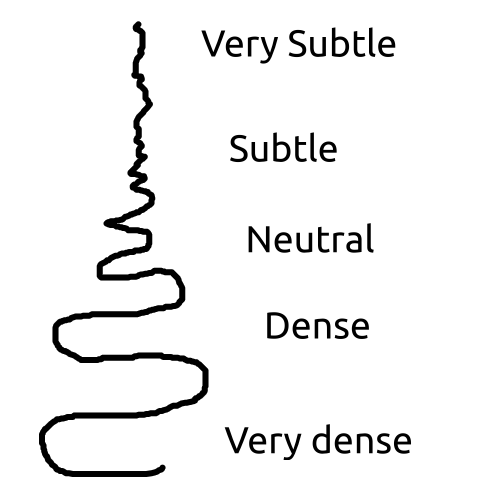Density

By density in this page it is referring to the thickness of things. It'll give you an idea on how the earth element turns into water, water turns into air and air turns into fire.
To understand density, think of it as how tightly compressed something is. How heated and forged it is. Or in the opposite way, how light, subtle, soft, spaced out it is.
The earth element is the most solid of all elements and earthly materials/substances can range in densities. Rocks are more dense than dirt for example. Metal is more dense than rock. Earthly things are naturally the most physical, they are the most compressed.
If particalised then it becomes less dense and becomes more like a fluid as sand is.
Water is less dense than earthly materials and is able to move more than something like rocks or dirt, though still slow. The dense fluids are incredibly thick like pitch, tars, resins and syrups. Waters and juices are in the middle.
Volatile liquids like alcohol, ammonia and mineral acids that can evaporate easily are the least dense.
Air is less dense than water and is the first spiritual or nonphysical element. Air sit above liquids in density. There are thicker or denser airs like smoke and mist, heavy gasses or thinner ones like rare or light gasses and vapour. Common air is in the middle.
The least dense spiritual element is the fire element. Fire and it's other forms like heat is less dense than air which is why a hot air balloon works.
Side notes
This is a part of elements or physics.
Universal index - Universal index